|
Midway
F4F-3/3A and F4F-4 Wildcats
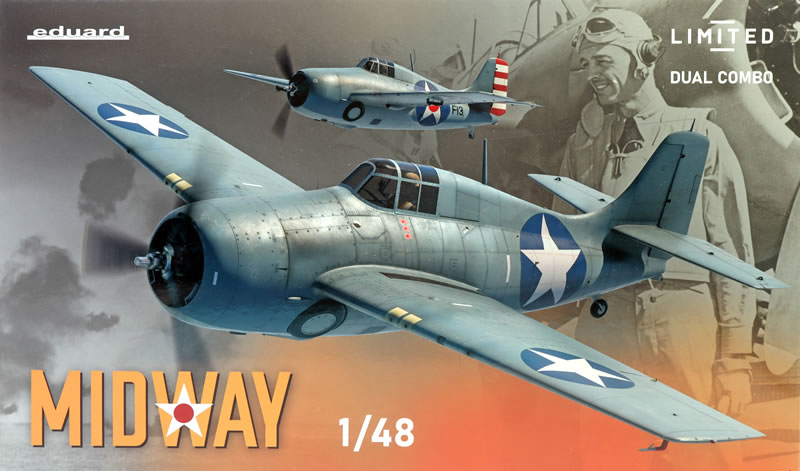
Eduard Limited Edition Dual Combo
1/48 scale
S
u m m a r y |
| Catalogue Number: |
Eduard Kit No. 11166 - Midway Limited Edition Dual Combo |
| Scale: |
1/48 |
| Contents and Media: |
More than 260 parts in grey coloured plastic (including many marked not for use); 52 parts in clear (24 marked not for use); two colour photo-etched frets with 122 parts; self-adhesive masking sheet; markings for ten aircraft |
| Price: |
USD$97.95 plus shipping,
available online now from Eduard
GBP£59.99 (£49.99 Export Price) plus shipping available from Hannants |
| Review Type: |
FirstLook |
| Advantages: |
Enough parts for two complete models - one F4F-3 or 3A and one F4F-4; very high level of detail; world beating surface features including crisply recessed panel lines, raised and recessed rivets, fabric texture, rib tapes and stitching; includes colour photo-etched parts; separate control surfaces; many options. |
| Disadvantages: |
No open cowl flap option. |
| Conclusion: |
Eduard's Midway Wildcat pair is just as impressive as its single boxing predecessors. I think the subtle fabric and recessed textures on Eduard's Windcsts are their best yet. The cockpit is a gem right out of the box, but the inclusion of colour photo-etch lifts the models to even greater heights. From day one Eduard has also released a slew of multi-media update sets for the cockpit, undercarriage, wheels, guns and more for their Wildcats, so you can decide for yourself whether to go straight from the box or super detailed. Another winner from Eduard. |
Reviewed by Brett Green

The Battle of Midway was a major naval battle in the Pacific Theatre of World War II that took place from 4–7 June 1942, six months after Japan's attack on Pearl Harbor and one month after the Battle of the Coral Sea. The U.S. Navy under Admirals Chester W. Nimitz, Frank J. Fletcher, and Raymond A. Spruance defeated an attacking fleet of the Imperial Japanese Navy under Admirals Isoroku Yamamoto, Chuichi Nagumo, and Nobutake Kondo north of Midway Atoll, inflicting devastating damage on the Japanese fleet. Military historian John Keegan called it "the most stunning and decisive blow in the history of naval warfare", while naval historian Craig Symonds called it "one of the most consequential naval engagoments in world history, ranking alongside Salamis, Trafalgar, and Tsushima Strait, as both tactically decisive and strategically influential".

In response to the Doolittle air raid on Tokyo, the Japanese leadership planned a "barrier" strategy to extend Japan's defensive perimeter. They hoped to lure the U.S. aircraft carriers into a trap, clearing the seas for Japanese attacks on Midway, Fiji, Samoa, and Hawaii. The plan was undermined by faulty Japanese anticipations of the U.S. reaction and poor initial dispositions. Crucially, U.S. cryptographers were able to determine the date and location of the planned attack, enabling the forewarned U.S. Navy to prepare its own ambush.
Four Japanese and three U.S. aircraft carriers participated in the battle. The four Japanese fleet carriers—Akagi, Kaga, Soryu, and Hiryu, part of the six-carrier force that had attacked Pearl Harbor six months earlier—were sunk, as was the heavy cruiser Mikuma. The U.S. lost the carrier Yorktown and the destroyer Hammann, while the carriers USS Enterprise and USS Hornet survived the battle fully intact.

After Midway and the exhausting attrition of the Solomon Islands campaign, Japan's capacity to replace its losses in materiel (particularly aircraft carriers) and men (especially well-trained pilots and maintenance crewmen) rapidly became insufficient to cope with mounting casualties, while the United States' massive industrial and training capabilities made losses far easier to replace. The Battle of Midway, along with the Guadalcanal campaign, is widely considered a turning point in the Pacific War.
*Historical summary adapted from Wikipedia
Eduard's debuted their Wildcat 1/48 scale family with the F4F-3 in August 2022, followed by their F4F-4 before the end of 2022. The clan is now expanding with this Midway Dual Combo boxing..
The box contains sufficient parts for two complete models - one F4F-3 or 3A and one F4F-4. Although all the parts for the F4F-3A were on he sprues of the earlier F4F-3 kit, this is the first time we have had the option of F4F-3A decals.
F4F-3A, which was basically the F4F-3 but with a 1,200 hp (890 kW) Pratt & Whitney R-1830-90 radial engine with a more primitive single-stage two-speed supercharger. The F4F-3A, which was capable of 312 mph (502 km/h) at 16,000 ft (4,900 m), was used side by side with the F4F-3, but its poorer performance made it unpopular with U.S. Navy fighter pilots.
Eduard's 1/48 Midway Limited Edition Dual Combo comprises more than 260 parts in grey coloured plastic (including many marked not for use), 52 parts in clear (24 marked not for use), teo colour photo-etched frets with 122 parts, self-adhesive masking sheet, markings for ten aircraft and detailed instructions.
Indeed, detail is excellent. The cockpit is built up from plastic and photo-etched parts. With its tubby fuselage, there is plenty of space to build the cockpit up from the bulkheads to the accurate see-through floor, pilot's foot rails, busy side consoles, rudder pedals and the instrument panel.
Colour photo-etched parts are supplied for the instrument panel, but alternative dial decals are offered as an option if you prefer.
The crisply pre-painted panels for the side consoles are another highlight, as are the impressively shaded harness straps.

The firewall doubles as a rigid base for the wing spars.
The engine mounts are made up from three cleverly designed pieces that plug directly into the back of the engine.With careful handling this should be an impressive looking structure.
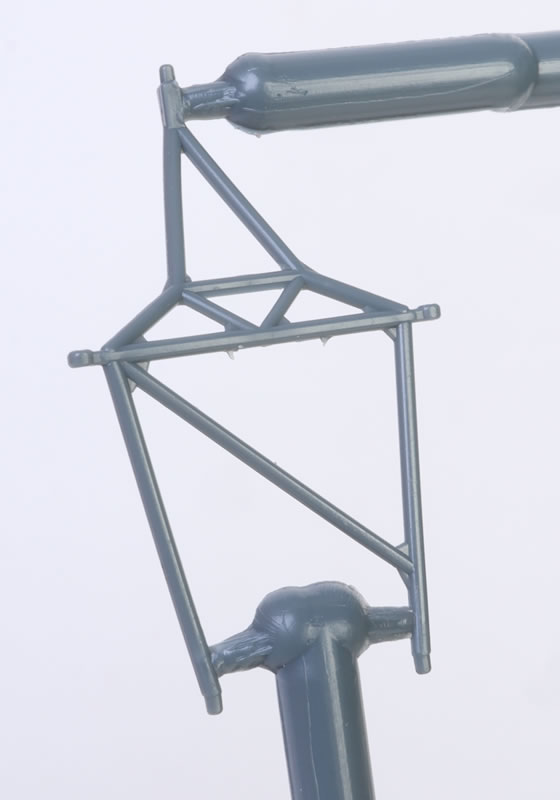
The instructions recommend that you trim a little from the inside of the lower fuselage window opening before gluing the clear pieces in place. Ignore the instructions at your peril!
The textures on this model are superb - perhaps their best yet.
I really like the stretched fabric effect on the control surfaces, along with rib tapes and stitching detail.
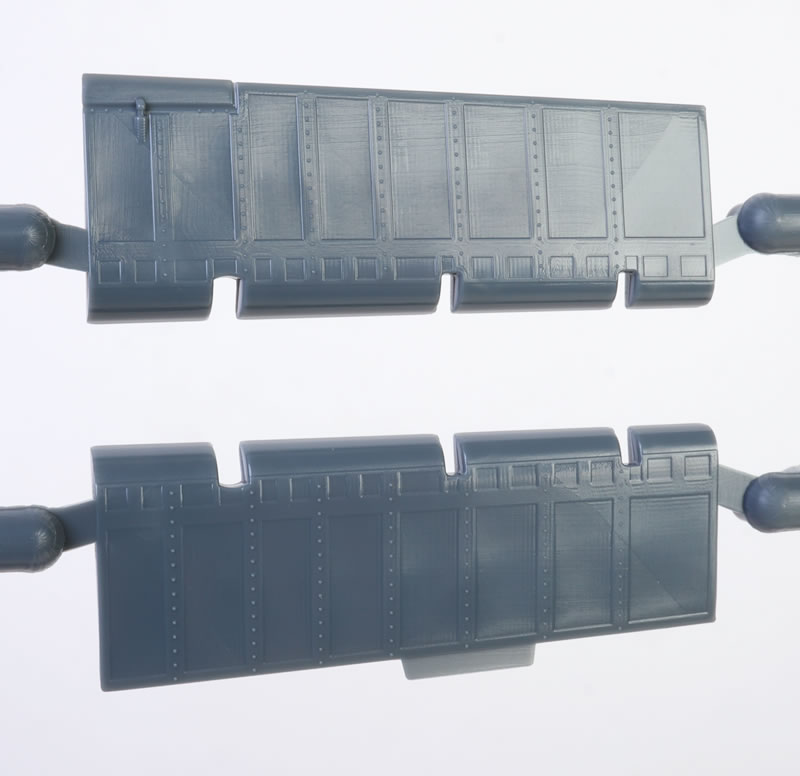
The combination of recessed and raised rivets on the fuselage is a nice touch too. It is very subtle - more of a touchable texture than an obvious feature. The lines of recessed rivets are particularly fine.
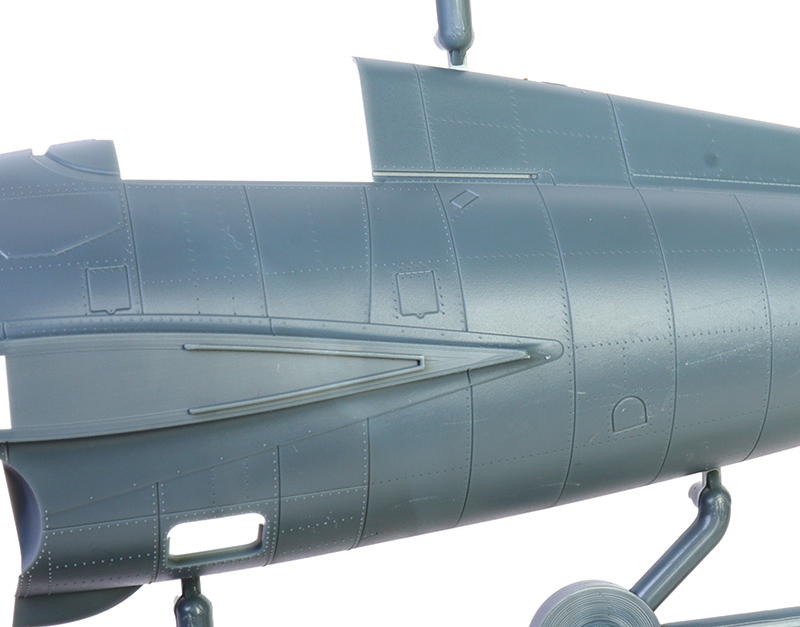
Parts breakdown is conventional. The upper and lower wings are split into port and starboard halves. They will slide onto the stout wing spars later in the assembly sequence. All control surfaces are separate.
The new wings depict the different panel line arrangement as well as the recessed lines for the wing folds.
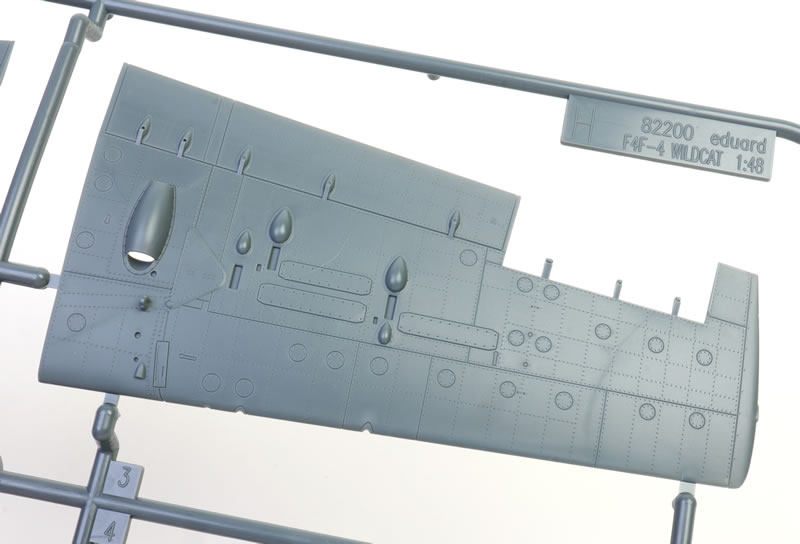
There was discussion about raised gun access panels on the upper wings of the original F4F-3 kit. The F4F-4 also has very restrained raised panels. They are even hard to see under the unforgiving glare of my big Bowens strobes, carefully angled to pick up the effect. It is so subtle that you really have to look for it.
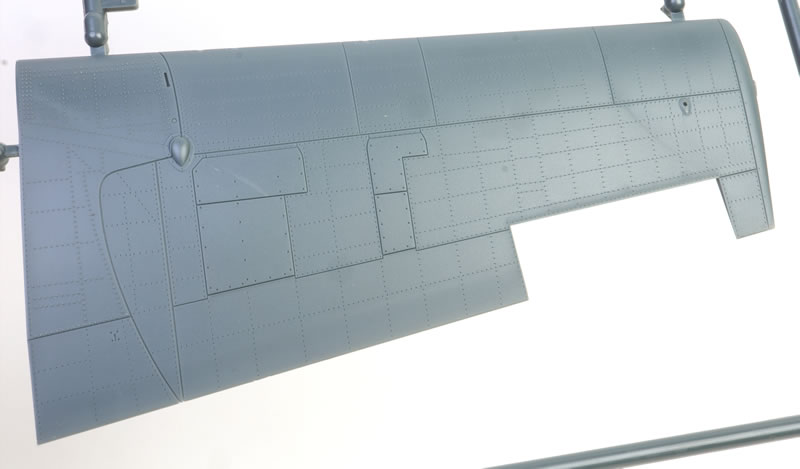
The characteristically spindly undercarriage is built up from a number of fine plastic parts. Their assembly is cleary illustrated in the instructions.
Main wheels are moulded with radial tread and a separate covered hub. The tyres are not bulged or flattened.
Two styles of tail wheel are supplied - one with a pneumatic tyre and another with a smaller solid rubber type.
The engine is simply broken down into four parts - two rows of cylinders, a ring of push rods and crankcase cover. Ignition harness is not included.
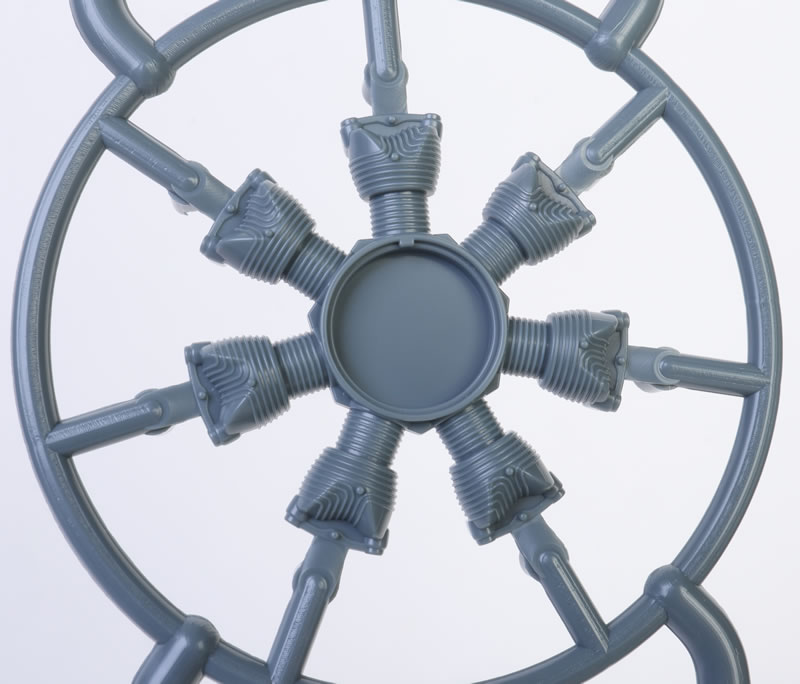
You are also offered the choice of three different forward cowls and two side cowlings. Cowl flaps are closed on all options. The instructions advise which parts are applicable to what marking option.
Wing mounted bomb racks are optional. The wing machine guns are not hollowed out at the end but the cooling jackets feature deep holes that look great.
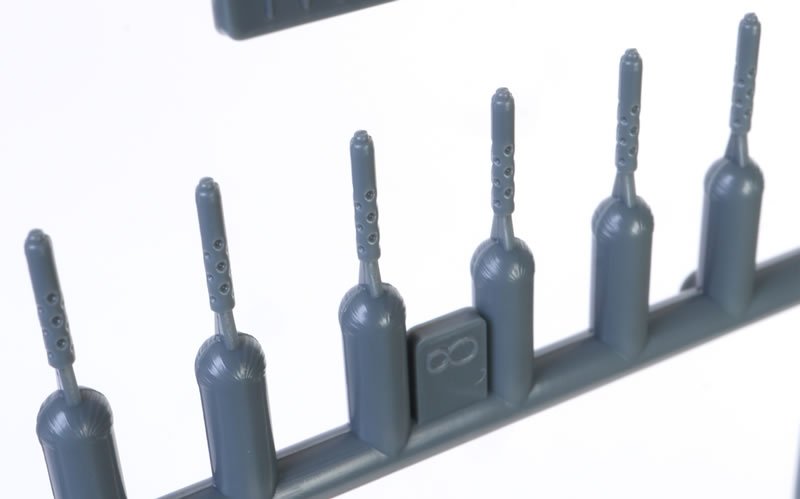
Three antennae on the lower fuselage are supplied as flat photo-etched parts. I'll be replacing these with fine metal rod. Check your references for the correct location of these.
The clear sprue is free from distortion. There are a number of options here, including different parts for open and closed canopies.
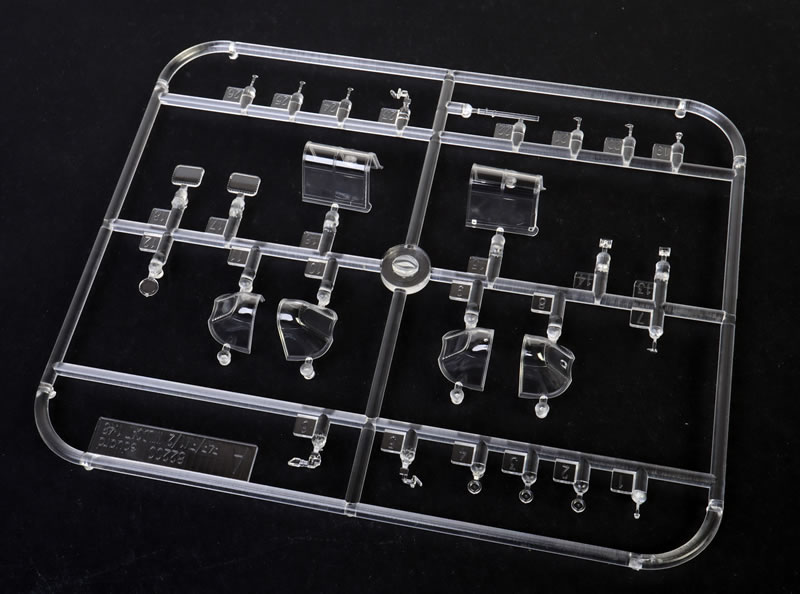
A windscreen with a hole to accommodate a telescopic sight is also provided.
Instructions are supplied in a 16 page stapled A4 booklet. As you'd expect, the diagrams are logical and easy to follow.
Markings
Markings are supplied for ten schemes as seen in the Battle of Midway.
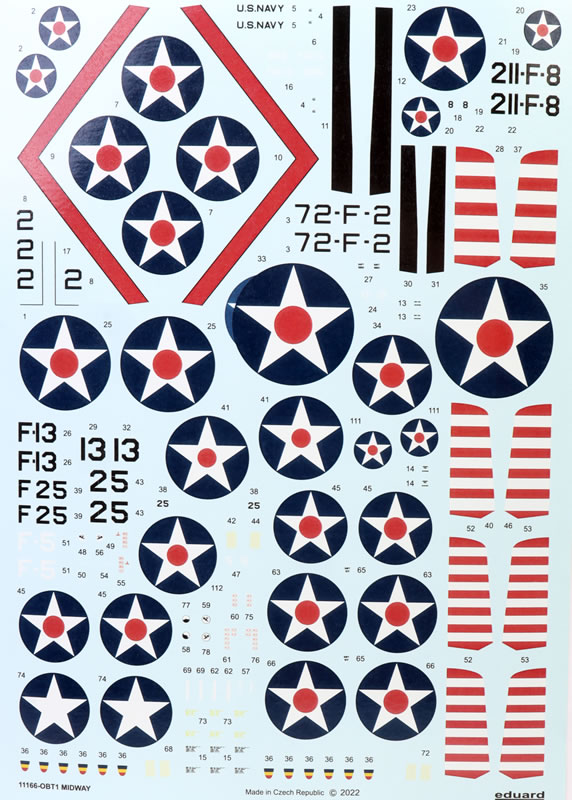
The two decal sheets are perfectly printed by Eduard.

Six colour four view diagrams and historical notes are included for all of the schemes.
Eduard's Midway Wildcat pair is just as impressive as its single boxing predecessors.
I think the subtle fabric and recessed textures on Eduard's Windcsts are their best yet. The cockpit is a gem right out of the box, but the inclusion of colour photo-etch lifts the models to even greater heights.
From day one Eduard has also released a slew of multi-media update sets for the cockpit, undercarriage, wheels, guns and more for their Wildcats, so you can decide for yourself whether to go straight from the box or super detailed.
Another winner from Eduard!
Thanks to Eduard for the sample
Review Text Copyright © 2023 by
Brett Green
Page Created 11 April, 2023
Last updated
12 April, 2023
Back to HyperScale Main Page
Back to Reviews Page |
